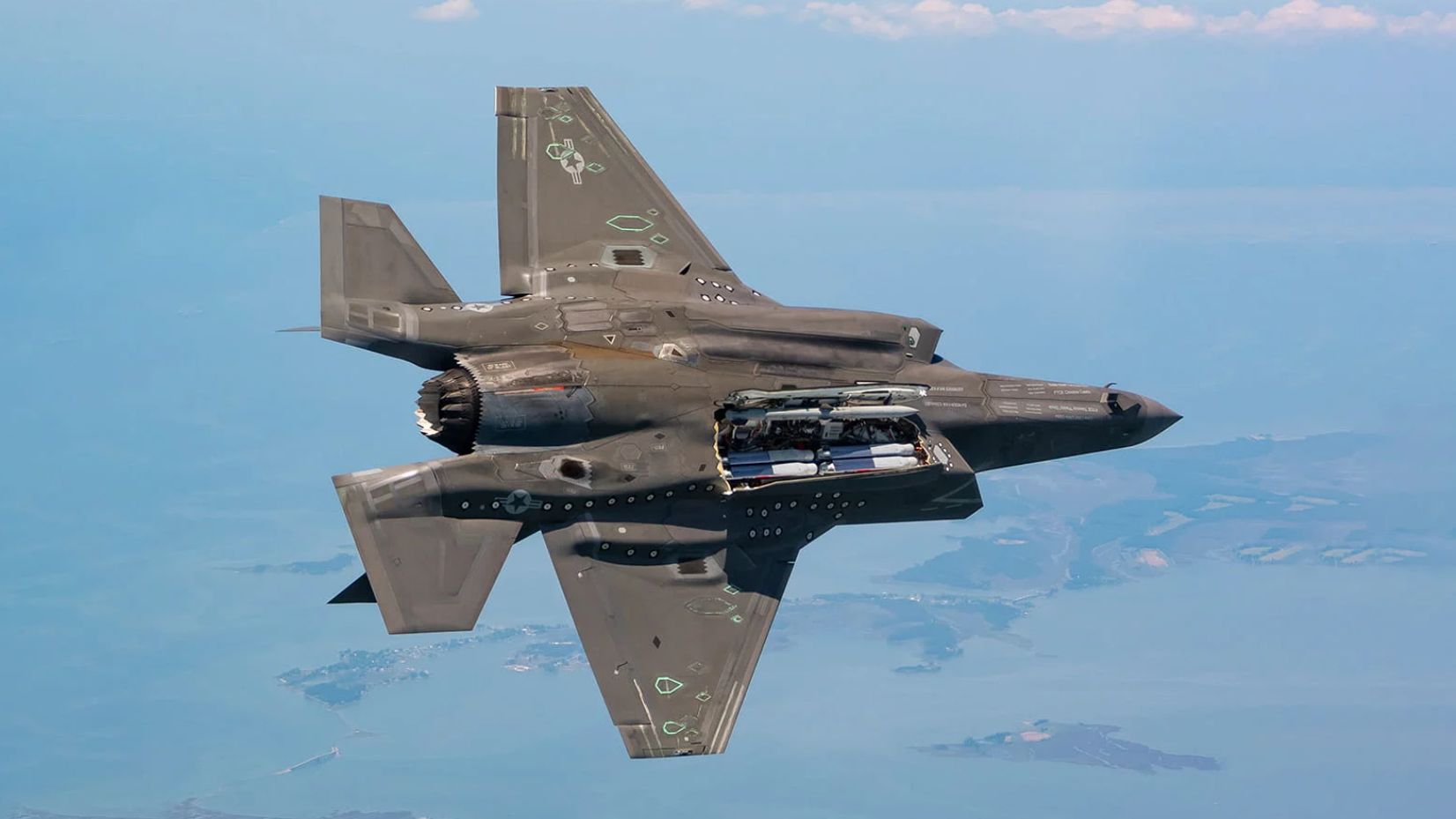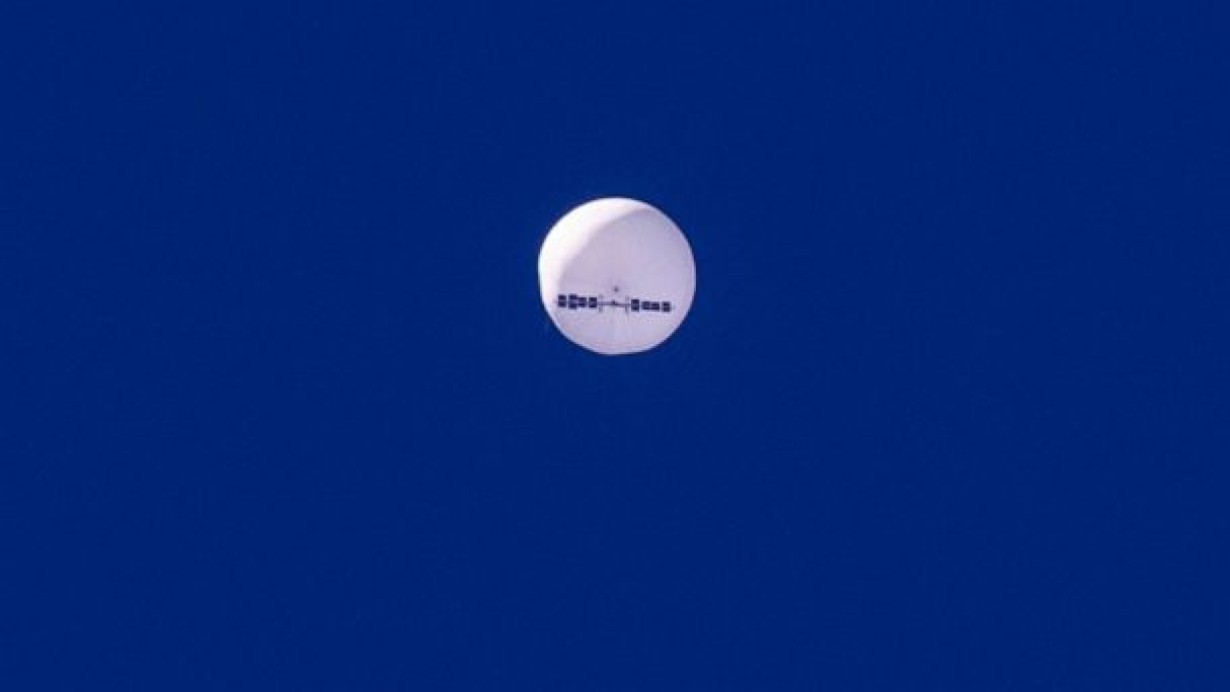Chinese scientists might have accomplished a feat that could make waves in the world of aerial surveillance. They’ve turbocharged ordinary weather radars, transforming them into eagle-eyed sentinels capable of spotting the tiniest aerial targets.
Picture this: A balloon, no larger than a speck in the vast sky, floating silently at stratospheric heights. Now imagine that same balloon being as detectable as an F-35 stealth fighter jet – the pinnacle of aerial invisibility. That’s exactly what China’s new radar technology can do if their claims are to be believed.
In a striking leap forward, Chinese scientists have pioneered new capabilities in weather radar technology, as claimed by the Hong Kong “South China Morning Post.” The Chinese breakthrough allows existing weather radars to detect small, high-altitude balloons with a radar cross-section comparable to that of an F-35 stealth fighter jet.
These balloons, previously elusive to traditional radar systems due to their diminutive size and slow speed, can now be effectively monitored. While this is advantageous for China, it raises concerns for other countries, including the US and India.
The ability to detect small high-altitude spy balloons with the same precision as tracking an F-35 stealth fighter jet represents a significant advancement in radar technology. This development could have major implications for national defense.

But here’s the kicker—this isn’t some multi-billion dollar, top-secret military project. It’s a simple software upgrade for existing weather radars—cheap, efficient, and frighteningly effective.
This is particularly significant as it means that software updates can greatly enhance the functionality and efficiency of weather radars without the need to replace existing equipment.
Moreover, this upgrade’s cost is very low, providing an economical and efficient solution for China in the fields of aviation monitoring and national defense.
With this technology, weather radars can continue to perform weather forecasting while also monitoring small airborne objects. This represents a major technological advancement in enhancing our national security protection network. In today’s increasingly competitive global technological landscape, this achievement by Chinese scientists highlights our strength and wisdom in technological innovation.
This breakthrough comes at a time when the skies are becoming an increasingly contested space. Remember the Chinese “weather balloon” that took an unscheduled tour of the US in early 2023? It sparked a media frenzy and left the US military red-faced, scrambling fighter jets to track what they initially failed to detect.
Now, China seems to have flipped the script.
Understanding The Threat: Spy Balloons
Spy balloons have a long history of espionage and continue to offer certain spying advantages. Spy balloons have been in use since the First World War, which spurred scientists and engineers to advance “lighter-than-air” technology.
Despite the prevalence of satellites, surveillance balloons—advanced balloons equipped with high-tech, downward-pointing imaging gear—provide close-range monitoring. These balloons are often subject to weather patterns but can also be equipped with a “guiding apparatus” to control their path.
While satellites remain the preferred method of overhead spying, lower-flying balloons, which hover at about the same height as commercial airlines, can capture clearer images than the lowest-orbiting satellites. This is primarily due to the rapid speed of such satellites, which complete an Earth orbit in 90 minutes.
Surveillance balloons are also capable of gathering electronic signals and intercepting communications. David DeRoches, a professor at the Near East South Asia Center for Strategic Studies at the National Defense University in Washington, DC, explained while talking to ‘Al Jazeera’ that these balloons can offer valuable intelligence capabilities.
Now, Chinese researchers have highlighted the military functions of air-floating balloons, such as creating false air situations, deploying lethal weapons, engaging in psychological warfare, and conducting intelligence reconnaissance. This information was detailed in a project led by Yin Jiapeng, an associate researcher.

China’s “Spy Balloons” In US Skies
In January 2023, a large balloon from China entered US airspace. It was visible to many Americans, who mistook it for a UFO and shared videos on social media.
Surprisingly, the powerful US military air defense system did not detect it initially. Under intense public pressure, the military deployed fighter jets to track the balloon as it flew over a large part of the country. The Pentagon admitted that similar balloons had often entered the United States before and that their radar had limited ability to detect such objects.
“I will tell you that we did not detect those threats, and that’s a domain awareness gap,” Air Force General Glen VanHerck, head of the US Northern Command and the North American Aerospace Defense Command (NORAD), said after the balloon was shot down by an F-22 on February 4, 2023.
In September 2023, the truth about the Chinese spy balloon was uncovered by US intelligence. US officials had accused China of spying, which the Asian nation had categorically denied.
A US official revealed that the Chinese spy balloon, which traversed the United States in early 2023, used an American internet service provider to transmit periodic data related to navigation and location back to China. Reports indicated that the balloon could communicate with Beijing as it crossed the US. China has consistently maintained that the balloon was a weather balloon that had veered off course.
Threat To Other Countries
And it’s not just the US in China’s sights. From Japan to India, reports of mysterious ‘UFOs’ are popping up, raising eyebrows and tensions.
China has recently established its fifth command, Near-Space Command, under the Central Military Commission, alongside the Army, Navy, Air Force, and Rocket Force of the People’s Liberation Army (PLA). The Near-Space Command employs solar-powered drones, robotics, and spy balloons for high-altitude surveillance and intelligence gathering.
The PLA’s covert Strategic Support Force (SSF) also operates spy balloons. According to a recent Pentagon report, the SSF is a theater command-level organization established to centralize the PLA’s strategic missions and capabilities in space, cyberspace, electronics, information, communications, and psychological warfare.
The SSF operates tracking, telemetry, and command stations in Namibia, Pakistan, Argentina, and Kenya. It also has a handful of Yuan Wang-class space support ships to track satellite and intercontinental ballistic missile launches.
4 Reasons Why China’s Xi Jinping Has Taken ‘Direct Control’ Of Military & Disbanded ‘Much Hyped’ SSF
China is reportedly running a military-linked aerial surveillance program that has targeted more than 40 countries, according to the Biden administration. While China denies these allegations, evidence suggests otherwise.
The US has accused China of sending spy balloons multiple times to US bases in Guam and Hawaii in the Pacific. Additionally, Japan, a key US ally, claimed that three ‘balloon-shaped flying objects’ spotted in its airspace between November 2019 and September 2021 were Chinese ‘unmanned reconnaissance’ aircraft. Taiwan reported similar aerial objects last year.
In November 2023, an ‘unidentified flying object (UFO)’ sighted near Imphal airport in Manipur led the Indian Air Force (IAF) to mobilize fully loaded Rafale jets, alarming the Indian security establishment.
The UFO forced Imphal’s Bir Tikendrajit International Airport to suspend operations for almost two hours. Security officials did not rule out the possibility of a Chinese ploy to test India’s reaction and preparedness to aerial threats.
Conclusion
The implications are clear – the game of aerial cat-and-mouse has entered a new phase. While the US is still playing catch-up in balloon detection, China has leapfrogged ahead, turning mundane weather trackers into sophisticated spy catchers.
In this new age of aerial espionage, it seems the sky is no longer the limit—it’s the new battlefield. And China, with its weather radar revolution, has just changed the rules of engagement.
- Shubhangi Palve is a defense and aerospace journalist. Before joining the EurAsian Times, she worked for E.T. Prime. In this capacity, she focused on covering defense strategies and the defense sector from a financial perspective. She offers over 15 years of extensive experience in the media industry, spanning print, electronic, and online domains.
- Contact the author at shubhapalve (at) gmail (dot) com.




